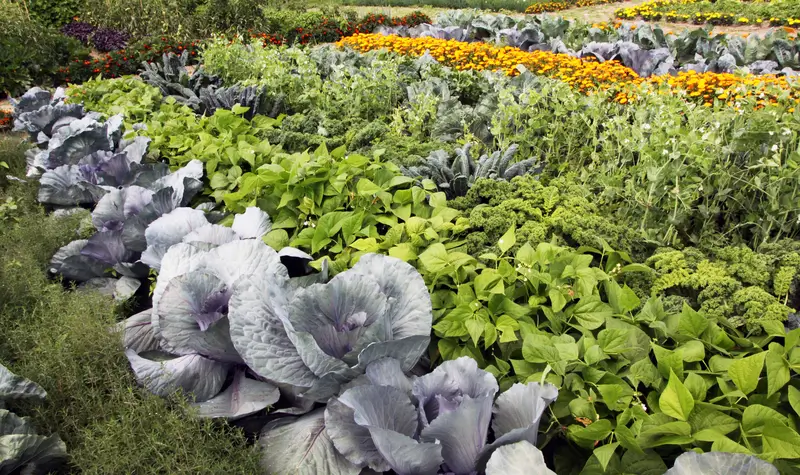Crop rotation is a pivotal agricultural practice, enhancing soil health and increasing yields. This guide elucidates the benefits and methods, showcasing its importance for sustainable farming success.
Understanding Crop Rotation
Crop rotation involves alternating different types of crops in the same field across various seasons or years. This strategy prevents soil depletion, manages pests, and boosts crop yield by optimizing the use of soil nutrients. Unlike monoculture, where one crop type is repeatedly grown, crop rotation diversifies the agricultural landscape. This practice enriches the soil and lays the groundwork for a more sustainable and productive farming approach.
The Benefits of Crop Rotation
Implementing crop rotation offers several critical advantages for both the environment and crop yields:
- Soil Health Improvement: Rotating crops helps maintain soil fertility by balancing nutrient levels and preventing erosion.
- Pest and Disease Management: Different crops break the cycle of pests and diseases, reducing their spread and impact.
- Weed Control: Varying crops can suppress weed growth through natural competition and varying cultivation practices.
- Yield Enhancement: Healthier soil and reduced pest pressure lead to better crop growth and higher yields.
These benefits underline the critical role of crop rotation in achieving sustainable agricultural practices.
Types of Crops in Rotation
In crop rotation, selecting the right mix of crops is crucial for maximizing benefits:
- Legumes: Beans and peas fix nitrogen in the soil, reducing the need for chemical fertilizers.
- Root Crops: Like carrots and radishes, loosen the soil, improving its structure and aeration.
- Leafy Greens: Produce like lettuce and spinach help suppress weeds and prevent soil erosion.
- Grains and Grasses: Wheat and corn add organic matter to the soil as cover crops.
Strategically rotating these crop types can enhance soil health, control pests, and increase biodiversity, contributing to a more productive and sustainable farming system.
Crop Rotation Strategies
Effective crop rotation requires careful planning and consideration:
- Rotation Length and Complexity: The sequence and diversity of crops can vary. Some rotations are simple, alternating between two types, while others are more complex, involving multiple crops over several years.
- Scale of Operation: Tailor crop rotation to fit the size of the farm or garden. Large farms may implement extensive rotations, whereas small gardens might focus on rotating a few key crops.
- Soil and Climate Considerations: Choose crops that are well-suited to local conditions. This ensures that each plant thrives and contributes positively to the rotation.
- Pest and Disease Management: Plan rotations to disrupt the life cycles of common pests and diseases, reducing their impact without chemical interventions.
By adopting these strategies, farmers and gardeners can create a rotation plan that boosts soil health, manages pests, and improves yields.
Challenges in Implementing Crop Rotation
While beneficial, crop rotation presents specific challenges:
- Limited Land: Small farms or gardens may need help to rotate crops effectively due to space constraints.
- Knowledge Requirement: Successful rotation requires understanding crop needs and local conditions, demanding research and experience.
- Initial Planning: Developing a rotation plan that balances soil health, pest management, and crop productivity can be complex.
Solutions include:
- Using community educational resources.
- Starting with simple rotations.
- Gradually expanding as space and knowledge allow.
Overcoming these obstacles enables farmers and gardeners to harness the full benefits of crop rotation.
Crop Rotation and Environmental Sustainability
Crop rotation significantly contributes to environmental sustainability by:
- Enhancing Biodiversity: Introducing a variety of crops supports diverse ecosystems above and below the soil.
- Reducing Chemical Use: By naturally managing pests and improving soil fertility, crop rotation lessens the need for synthetic fertilizers and pesticides.
- Improving Soil Health: Rotating crops prevents soil degradation and promotes the conservation of this vital resource.
This practice underscores a commitment to sustainable agriculture, safeguarding the environment while ensuring food security for future generations.
Conclusion
Crop rotation emerges as a foundational practice in sustainable agriculture, offering numerous benefits, from enhancing soil health to naturally controlling pests. By carefully planning and implementing diverse crop sequences, farmers and gardeners can improve productivity, reduce chemical dependency, and contribute to environmental conservation.




You are a very intelligent individual!